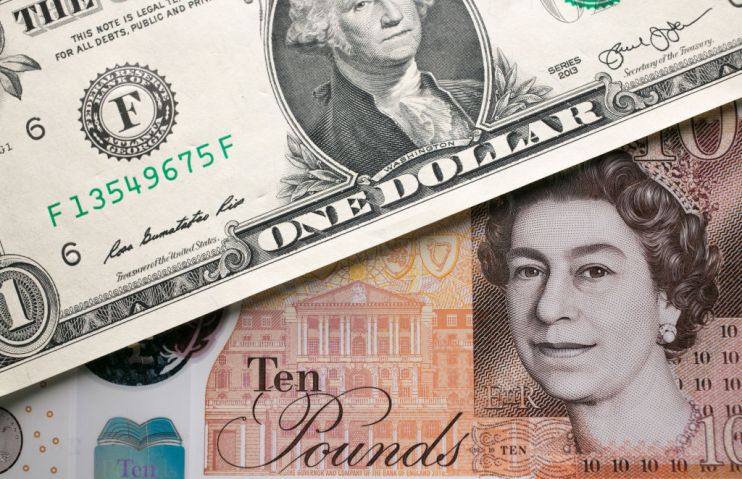Pound hits highest level against US dollar in over a year as traders bet Bank of England will outmuscle Fed

Pound sterling today climbed to its highest level against the US dollar in over a year, driven upwards by investors betting that the Bank of England will surpass the Federal Reserve in its interest rate rise cycle to bring down inflation.
Britain’s currency jumped around 0.7 per cent today to nearly $1.27, taking it to its strongest level against the greenback since April 2022.
Sterling’s ascent has been fuelled by markets betting on Bank governor Andrew Bailey and the rest of the monetary policy committee (MPC) having to keep hiking interest rates to tame a tough inflation problem.
A recent string of hotter-than-expected economic data has ignited concern that price pressures are withstanding the Bank’s twelve successive rate rises.
Purchasing managers’ indexes have indicated consumers are still willing to spend at a decent clip despite inflation eroding their incomes and elevated rates making borrowing less affordable.
April’s inflation number also shocked the City and the Bank by coming in at 8.7 per cent. Core inflation – which strips out volatile food and energy prices – rose to 6.8 per cent, suggesting prices are beginning to be driven by domestic factors, which are harder to eradicate.
As a result, traders think Bailey and co are on course to lift rates to a peak of at least 5.75 per cent from their current level of 4.5 per cent. That would mark the highest level since July 2007.
Next Thursday, the MPC may even raise rates 50 basis points, some corners of the market reckon.
Contrastingly, Fed Chair Jerome Powell and the federal open market committee are poised later today to leave borrowing costs unchanged for the first time in ten meetings at a range of five and 5.25 per cent. Goldman Sachs economists think the Fed will resume raising rates in the summer with a final 25 basis point jump.
Pound/US dollar exchange rate

Markets also think the Fed could launch its first rate cut at the back end of this year, while some economists have warned the Bank won’t ease pressure on households’ and businesses’ finances until 2025.
“The big picture is that investors now expect both interest rates and inflation to remain “higher for longer” in the UK,” Adam Hoyes, markets economist at consultancy Capital Economics, said.
If markets are correct, then UK rates would top America’s, meaning investors could earn a greater rate of return on British assets – capitalising on the so-called “yield differential”.
Traders are therefore hoovering up pounds to buy UK assets, pushing the currency higher against the US dollar.
Yields on UK gilts have raced to above the level reached in the days after Liz Truss’s £45bn tax-cutting mini budget in September 2022 and are higher than returns offered on their US equivalent at around 4.8 per cent.
Sterling collapsed to its lowest level ever against the greenback in the weeks after that haphazard fiscal event last autumn despite yields rising rapidly, a characteristic that is normally associated with an emerging market economy.
Hoyes said the threat of recession in the UK and a global “flight to safety” should cause the pound to retrace some of its gains against the dollar.
“The boost from yield differentials over the past few weeks has taken sterling close to its strongest level in a year against the US dollar. But we don’t anticipate that lasting. Alongside the fading influence of favourable yield differentials, we expect a broader strengthening in the greenback on the back of safe-haven flows to lead to a weaker pound by the end of this year,” he said.